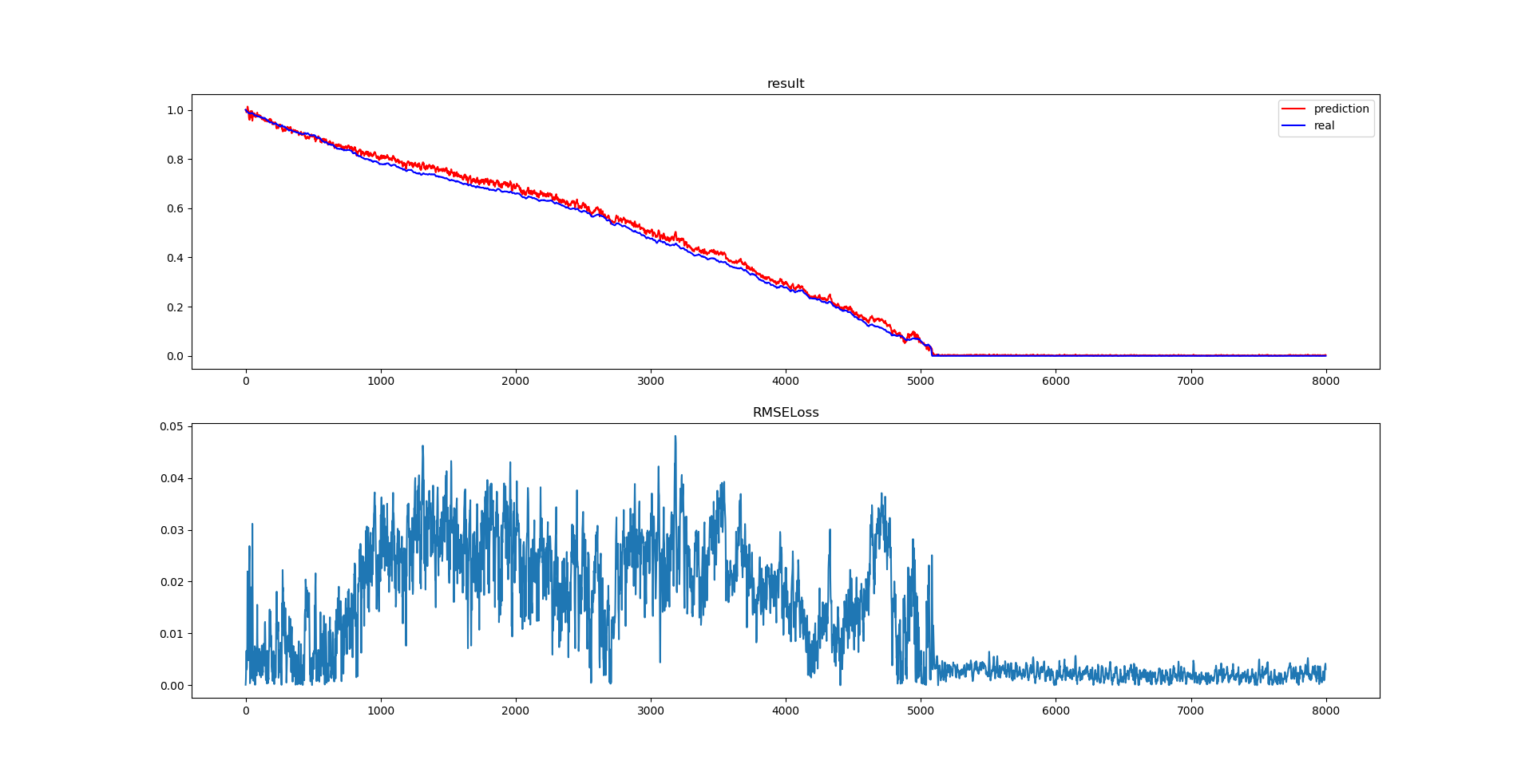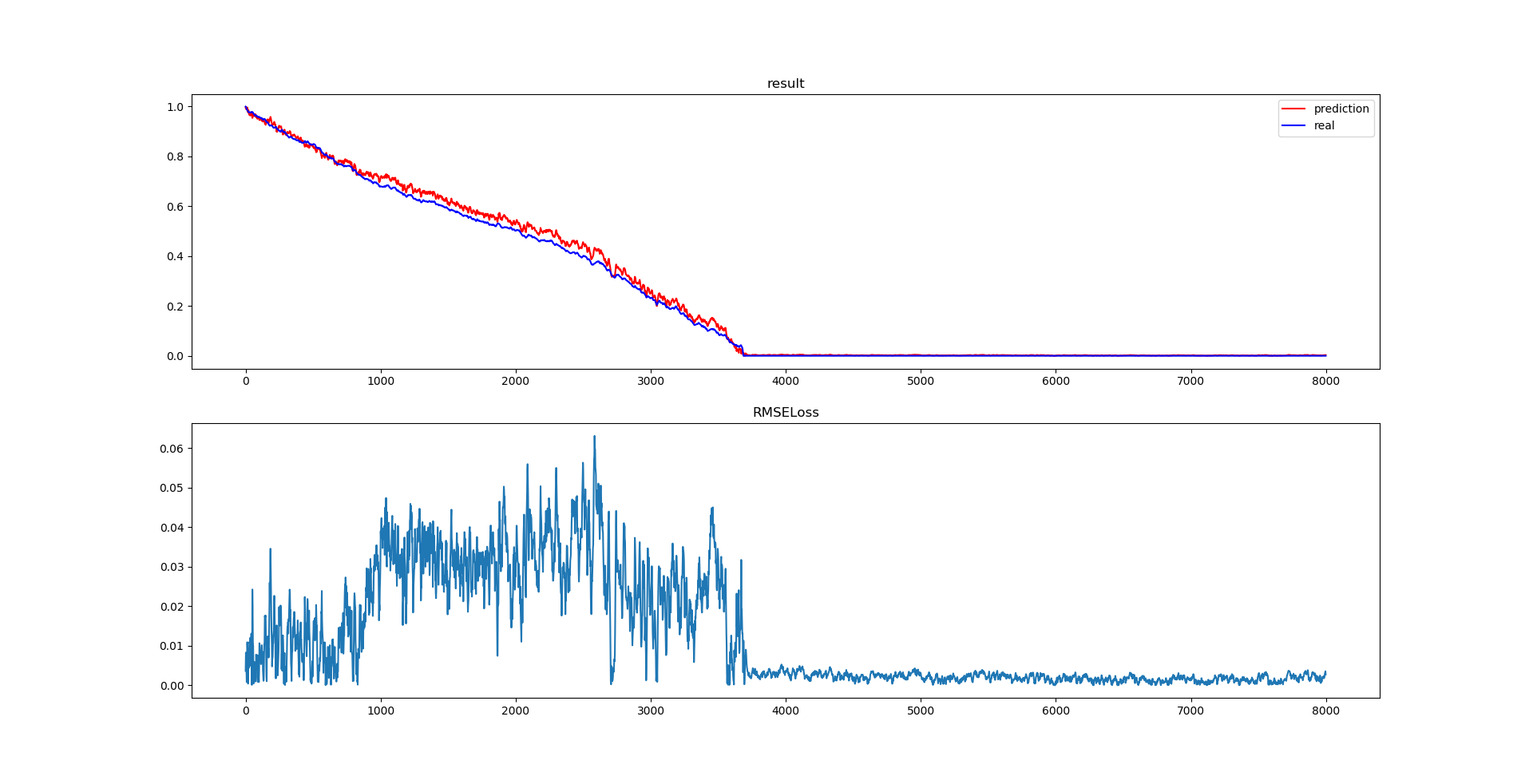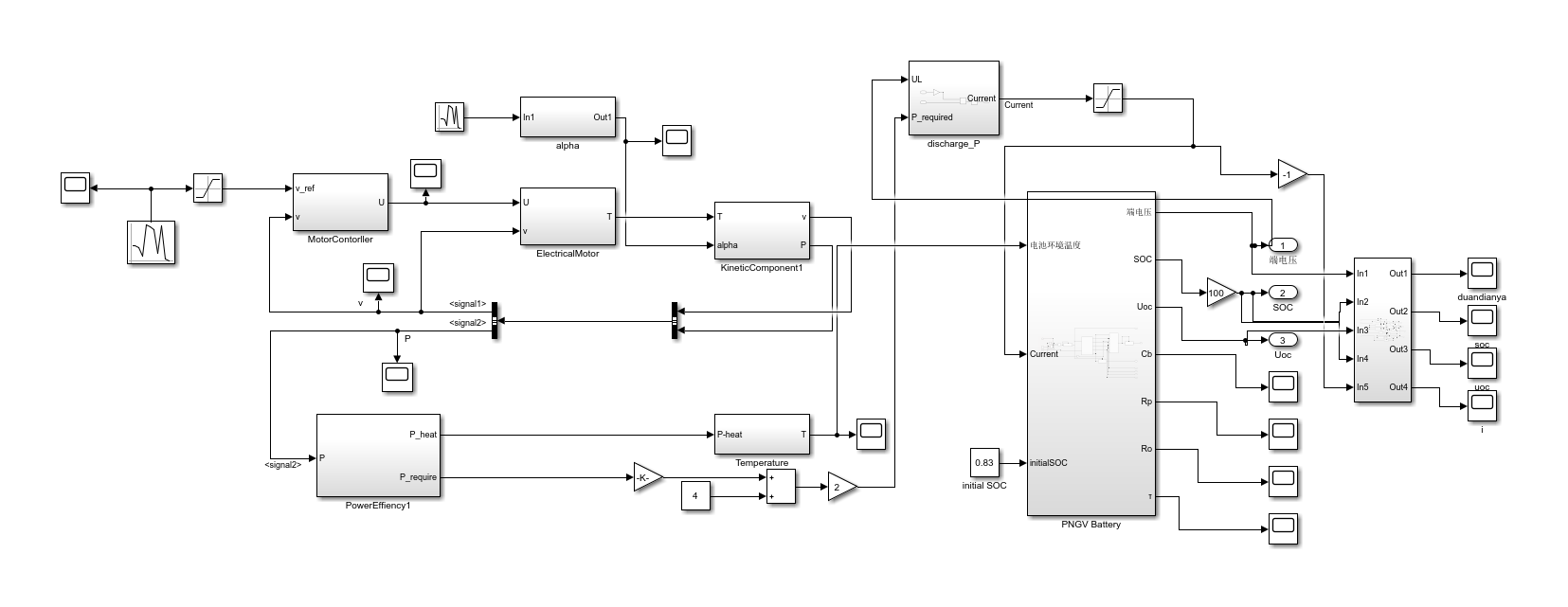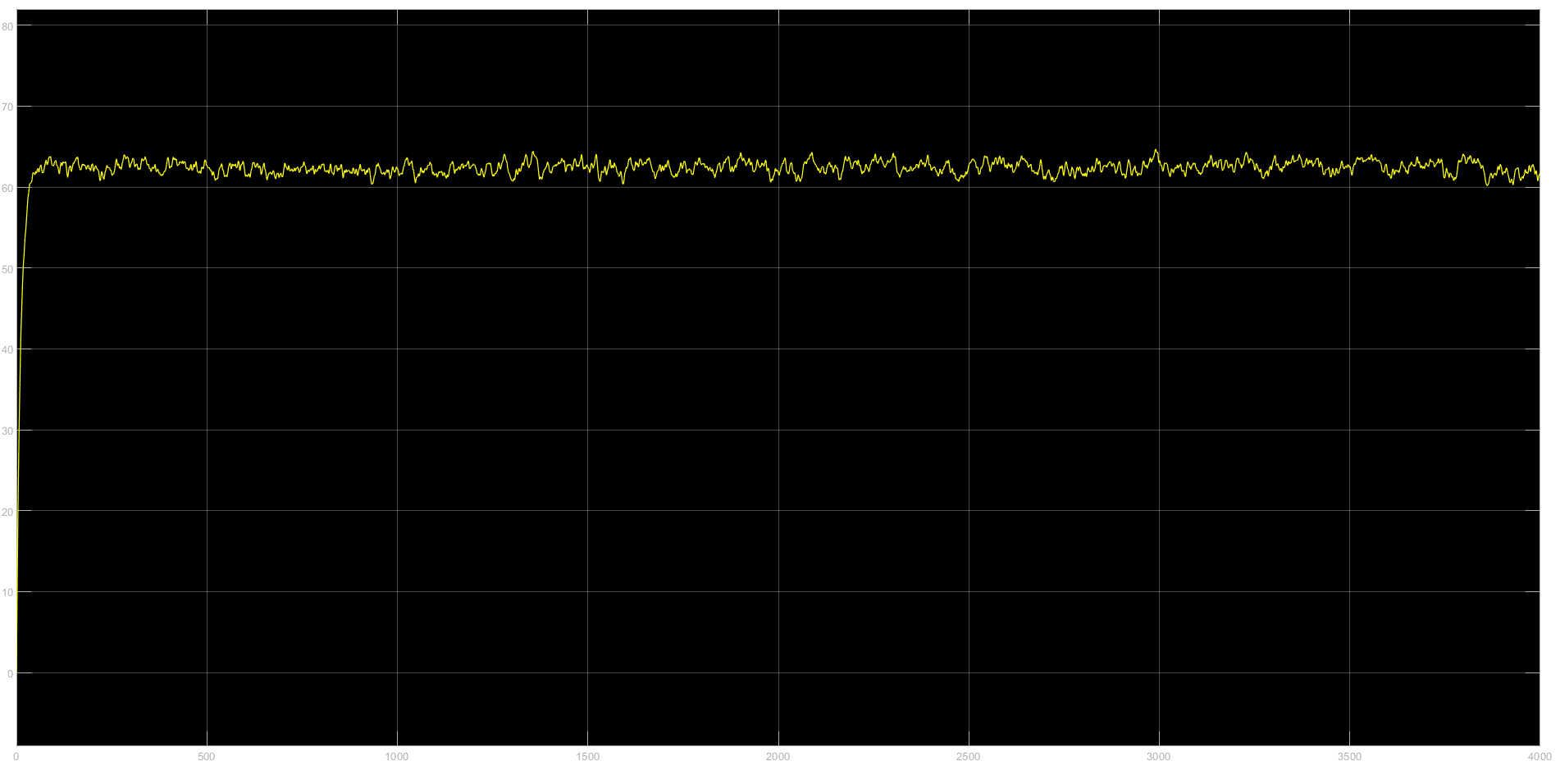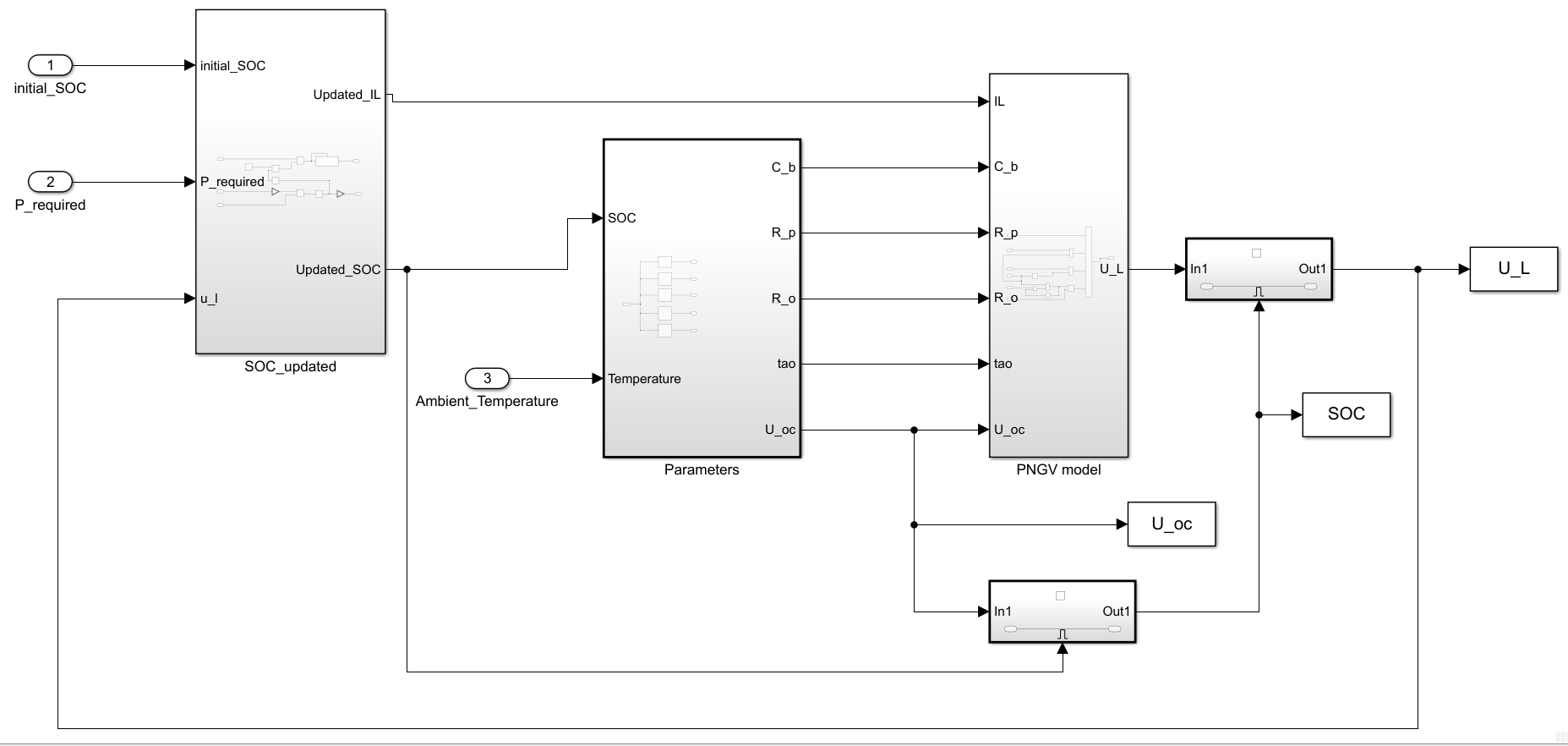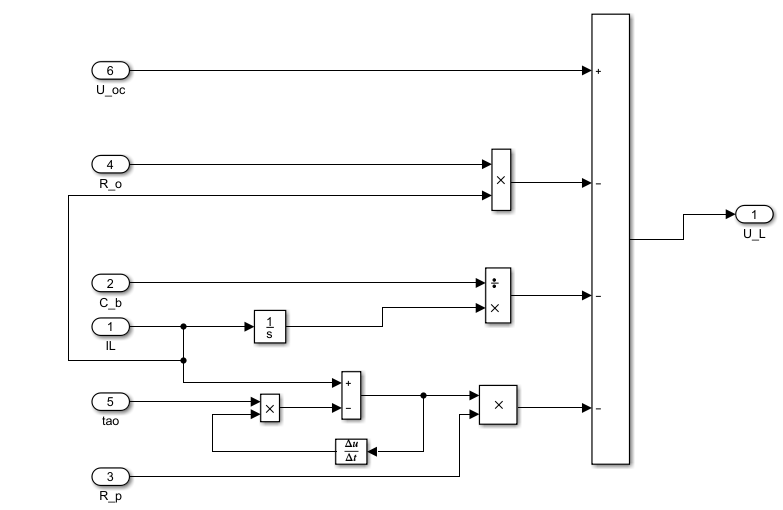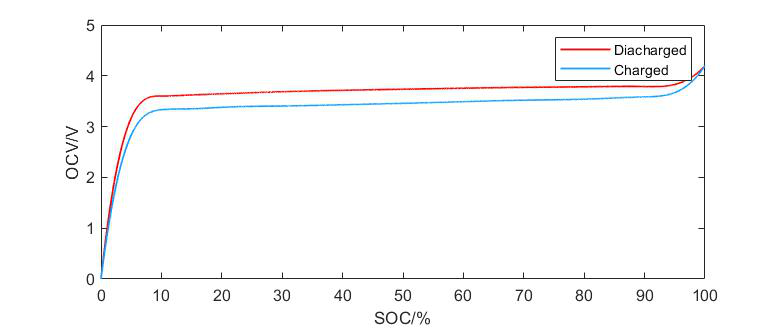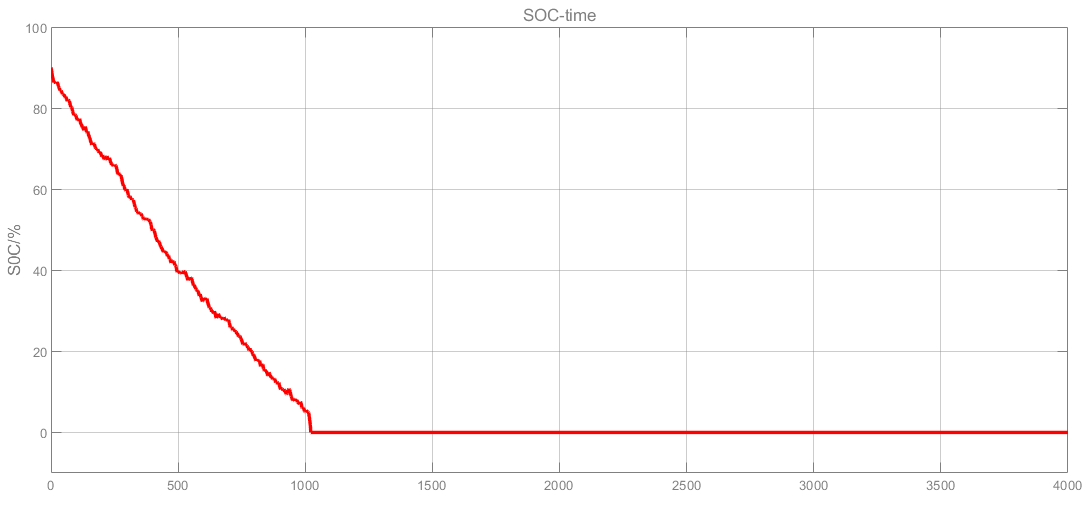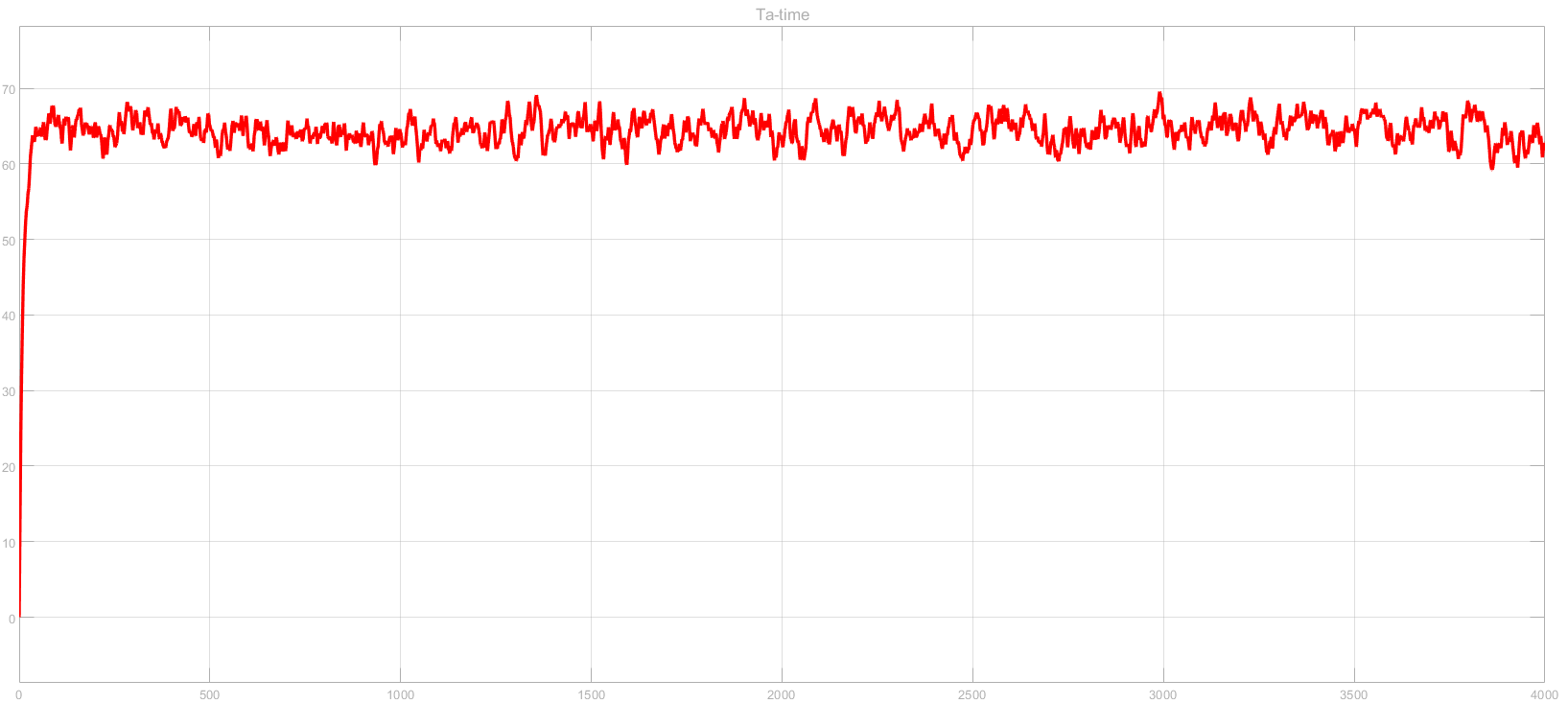| noteId | tags |
|---|---|
a7b22930795a11ea88acd9ef9a4d234b |
Version 1.0 : Re-write the Electric vehicles and batteries simulation model, build a CNN-LSTM model for SOC prediction, the SOH is also considered.
- Xin Chen: Supervisor
- Yuchen Zhang: SOC Prediction Model
- Siyuan Liang, Peiyuan Sun: Electric Vehicles Model
- Jiali Lu: Investigation
- Python: 3.x
- Pytorch: 0.4+
- Matlab: R2019a
- Simulink: 10.0
Improve prediction accuracy and avoid the high errors near zero point by cutting off the parameter transfers between different batches of data
- Download
smallNewModelDatadataset from here - Sturcture:
Prediction_Model_v1/
├── smallNewModelData
├── soc01.csv
├── soc01.csv
...
├── main.py
├── SOC_v1.py
├── SOC_test_v1.py
├── Data.py
└── net_params.pkl- Modify the
pathto your actual data path - Run
main.py
EPOCHES = 1500
RATE = 8e-3
HIDDEN_SIZE = 48
Optimizer = Adam
- Run
main.pyto train the model - CNN-LSTM model is defined in
Soc_v1.py Soc_test_v1.pyis for testingData.pyis for data processing, but you don't need to run it- Parameter is in
net_params.pkl
- Determine the weight, windward area, internal drive efficiency and the numbers of batteries of the simulation objects
- Fill them into the corresponding position of the model
- The speed and slope is also needed
- Operating input module
- Automotive speed control module
- Torque conversion module
- Vehicle kinect module
- Power conversion module
- Thermodynamics module
-
Get access to the simulation of the vehicle's inner situation under different working states which involve the variation of slope and velocity
-
Figure out the specific power needed from the battery to support the vehicle's work and the
Use the PNGV model to descibe the port of the battery
